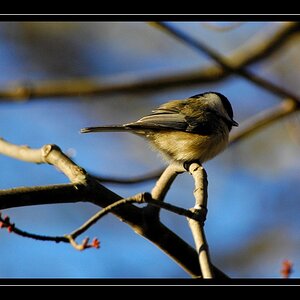sarahkate
TPF Noob!
- Joined
- Aug 17, 2011
- Messages
- 44
- Reaction score
- 1
Hi all. I'm shooting with Kodak portra 400 in my Canon AE-1 and I'm unclear about overexposing and underexposing.
To underexpose or overexpose do you change the ISO or the aperture?
For instance. If I'm shooting Kodak Portra 400 and I change the ISO to 320 (or 500)...would that be considered underexposing or overexposing? Or another example of keeping the ISO at box speed and changing the aperture based of the cameras built in metering system.
What is the difference/benefit?
In the past I've been changing my ISO based on lighting conditions and shooting at the recommended f-stop. Is this correct?
Thanks, Sarah.
To underexpose or overexpose do you change the ISO or the aperture?
For instance. If I'm shooting Kodak Portra 400 and I change the ISO to 320 (or 500)...would that be considered underexposing or overexposing? Or another example of keeping the ISO at box speed and changing the aperture based of the cameras built in metering system.
What is the difference/benefit?
In the past I've been changing my ISO based on lighting conditions and shooting at the recommended f-stop. Is this correct?
Thanks, Sarah.







![[No title]](/data/xfmg/thumbnail/42/42034-6262420ff3ea238f05395bbcc7ae1f28.jpg?1619739985)